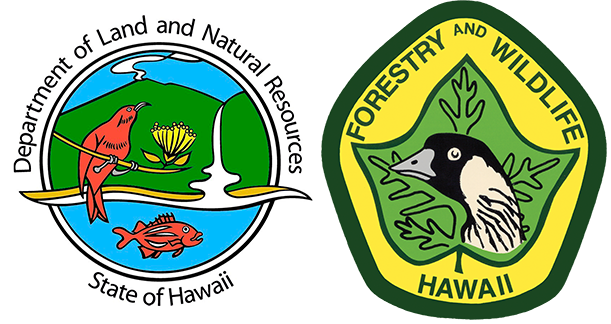DLNR Accelerating Forest Protection To Secure Hawaii’s Water Supply
Posted on Feb 14, 2014DLNR ACCELERATING FOREST PROTECTION
TO SECURE HAWAII’S WATER SUPPLY
DLNR, American Bird Conservancy air public service
message to promote protection of watersheds
HONOLULU – More than 140,000 acres of forest lands in Hawaii are now being managed to conserve Hawaii’s forests thanks to funding provided by Governor Abercrombie’s “The Rain Follows the Forest” Watershed Initiative. That number will increase to more than 480,000 acres by the time projects currently funded are completed. The administration’s goal, announced in 2011, is to double the acreage of protected watershed forests in a decade.
Governor Neil Abercrombie said: “My administration is supportive of the state Legislature’s consideration of a funding source for the watershed protection.” Governor Abercrombie has proposed in his supplemental budget $11 million for watershed protection in fiscal year 2015, as a continuation of his New Day plan to steward Hawaii’s natural resources.
Helping to spread greater public awareness of the importance of protecting the forest watersheds, is a public service announcement produced by the American Bird Conservancy, which has been airing on Hawaii television stations for a month and is also available on the internet at https://www.youtube.com/watch?v=FiYcvntog74. With charming vignettes, it explains why immediate action needs to be taken to protect Hawaii’s native forests, which have declined by over 50% from their pre-contact extent.
Forests protect Hawaii’s fresh water sources, which is critical as Hawaii’s climate becomes hotter and drier. “Changing climate and species invasion are threatening Hawaii’s fresh water supplies,” said Dr. Tom Giambelluca, a professor of geography at the University of Hawaii at Mānoa who specializes in Hawaii’s climate. “Forests are a major part of the water equation because they intercept water from the clouds and reduce direct runoff. The types of forests also matter. A forest of invasive strawberry guava trees can evaporate 27 percent more water than native ‘ōhia forests. When the native forests are replaced by more water-thirsty invasive species, large amounts of water can be lost over millions of acres,” Giambelluca said.
“Protecting mauka forest areas is the most cost effective and efficient way to absorb rainwater and replenish groundwater,” said William Aila, Jr., Chairperson of the Department of Land and Natural Resources. “Hawaii’s native forests absorb moisture from rainfall and passing clouds that condense on the thick vegetation. Protecting our native forests from invasive species such as strawberry guava is essential to preserving our most critical watershed areas,” he said.
“Our forests are huge economic assets – just the Ko‘olau mountain forests have been valued at up to $14 billion,” said Dr. James Roumasset, a professor of economics at UH Mānoa who has conducted studies measuring the forests’ importance to Hawaii’s economy. “Groundwater recharge is the primary factor; however, the forests are also important for water quality, climate control, biodiversity, and cultural, aesthetic, recreational, and commercial values.”
Pigs, goats, deer, cattle and sheep are damaging forests by uprooting native plants, opening patches of bare soil and spreading invasive plants. Installing protective fences is the most cost-effective and long-term method to stop damage from non-native hooved animals in remote native forests. Step-overs and gates allow continued public access into DLNR fenced areas.
Over 10,000 acres of priority watershed forests have been protected by fences since the initiative began. In addition to fencing, management can include a wide range of actions: invasive plant removal, planting natives, fire prevention, removal of non-native animals, planning, and monitoring changes.
As part of the Watershed Initiative, efforts are underway for the DLNR’s Access and Acquisitions program which seeks to increase public access and hunting opportunities statewide. “Increasing public access will help Hawaii’s residents and visitors to better enjoy the outdoors and learn about the importance of conserving these unique environmental, cultural and historic areas in Hawai‘i,” Aila said.
For more information about DLNR’s Watershed protection plan and a link to the Public Service Announcement, visit: https://dlnr.hawaii.gov/rain
Direct link to the Public Service Announcement:
https://www.youtube.com/watch?v=FiYcvntog74
# # #
Media Contact:
Deborah Ward
Public Information Specialist
(808) 587-0320
